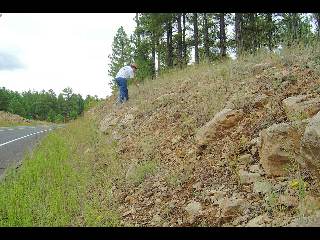 |
Fossils
from Lake Mary Road
Permian
Kaibab Harrisburg Member
Expedition:
8/22/2009
| 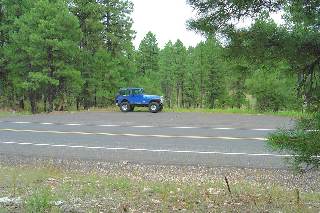 |
Updated 8/29/09
 |
Introduction.
Formerly known
as the Kaibab Alpha, the Harrisburg member contains by far the
most abundant fossil assemblage in the formation. Most fossils
are found moderately well preserved in a tan dolomitic limestone
which strongly resists any acid. By either examining road cuts
or cracking open the tan dolomites, you can find abundant mollusks
such as gastropods, bivalves, and scaphopods, and sometimes huge
wheelbarrow tire sized nautiloids. ( ! ) Excellent exposures
of both upper Harrisburg and lower Fossil Mountain members can
be found all along Lake Mary road on the way to Flagstaff. This
documents one such site we visited, which on a previous expedition seemed very promising for finding both
trilobites and huge nautiloids. We were not disappointed....
|
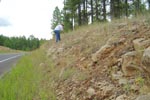 | One of the road cuts we
visited was rich in the tan dolomites. Since the cut was quite
broken up, many fossils are exposed along the breakage planes.
Additional cracking with a hammer of promising specimens usually
revealed an occasional rare Permian trilobite. |
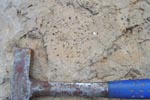 | A large Pectin, covered
with spines. The fossil is a negative mold of the mollusk. |
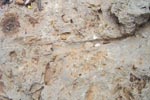 | Long tapered scaphopod.
Once identified in older texts as "Dentalium", we now
believe that this is a new Kaibab specific species. Dentalium
has an open end for water flow. These do not. |
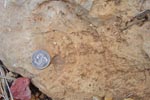 | The rock break shows a
cross section of a large nautiloid. This is the outer whorl. |
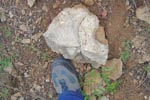 | The huge nautiloid I found,
which had obvious septa on the ends. |
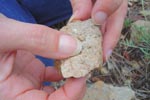 | Dawn finds a superb Anisopege
trilobite pygidum. It is probably "Anisopyge Mckeeii".
In the Permian, trilobites were nearly all gone. It is very
rare to find them in middle Permian sediments like these. |
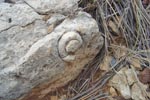 | Straparolus Gastropod internal
cast. We found one area with many poorly preserved specimens
and occasionally one very well preserved. |
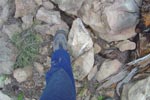 | Thallassenoides burrows.
These are the in filled domiciles of callanassid shrimp, these
were filled in with a high quartz gravelly in filling, indications
of a near shore environment in the tidal zone. |
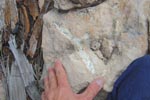 | Classic Y branching in
Thallassenoides. |
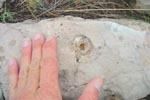 | Another nice Straparolus
cast... |
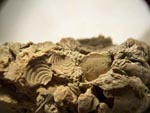 | Close up of unknown mollusk. |
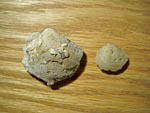 | Mollusk internal casts.
The fine details are missing making identifications nearly impossible,
but Id venture that the one on the left is a pectin. |
 | Here is the large nautiloid
I found, it is filled with tons of small shelly fossils! |
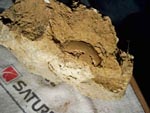 | Close up on the end showing
the partitions in the shell - the septa. |
 | Dawn found this magnificent 2 inch Straparolus (Kaibabensis?)
gastropod, with excellent ornamentation on the whorls. |
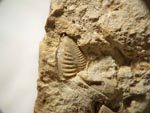 | Anisopyge McKeeii trilobite
pygidium. This close up shows the unusual narrow tapered appearance
of the pygidum which differs from the well rounded appearance
of the Mississippian Phillipsia we find in the Redwall. |
|
Paleo HOME

|